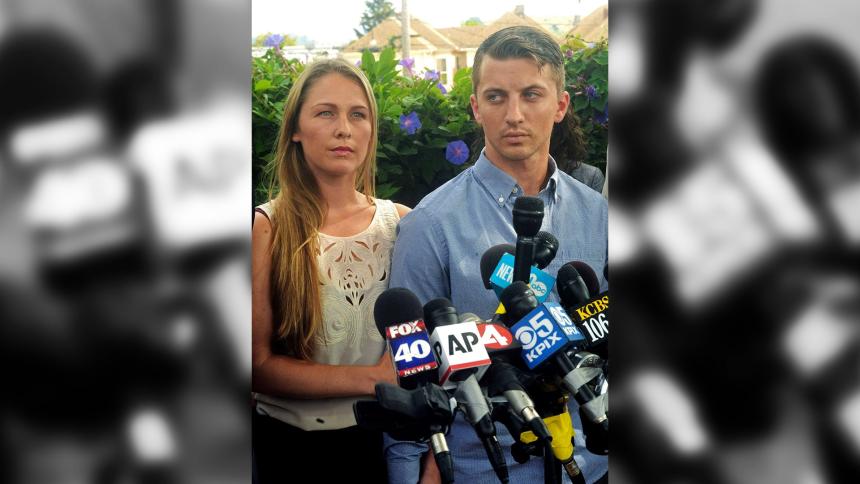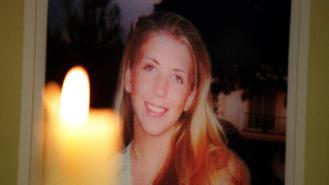
The astonishing twist in the real-life 'Gone Girl' abduction case
Gone Girl is a psychological thriller novel written by Gillian Flynn. After it was published in 2012, it quickly gained widespread acclaim and became a bestseller. In 2014, a film directed by David Fincher was released, with Flynn herself adapting the screenplay. The novel and film both captivated audiences with their gripping plot, complex characters, and unexpected twists.
At the story's core are Nick and Amy Dunne, a married couple whose lives take a sinister turn when Amy vanishes, leaving Nick under intense scrutiny as the prime suspect in her disappearance. However, the narrative takes another turn when it's revealed that Amy has meticulously orchestrated her own disappearance to incriminate her husband for her supposed murder.
In a curious parallel, a real-life event in 2015 in Vallejo, California, bore striking resemblance to the plot of Gone Girl. It was close to 2pm on 23rd March 2015, when police in Vallejo received a 911 call from a man named Aaron Quinn. He told them that at about 3am, he and his girlfriend, Denise Huskins, had been awoken by a man donning a mask. He said that the man then ordered Denise to bind him with zip ties, following which the man bound Denise. He then put blacked-out swimming goggles and headphones on the couple and forced them to ingest a sedative.
Prior to losing consciousness, the intruder issued instructions to Aaron and Denise; Denise was to be held captive for a span of 48 hours, while Aaron was confined to the couch within a designated area marked off with tape. Communication with the kidnapper was to be maintained exclusively through text and email regarding ransom demands. The intruder cautioned Aaron about surveillance cameras, warning that any attempt to involve law enforcement would result in dire consequences for Denise.
Upon awakening from the sedative-induced haze later that afternoon, Aaron found himself confronted with two ransom demands totalling $17,000. Fearful and uncertain, his first recourse was to reach out to his brother, an FBI agent, expressing his concerns about being watched by the intruder. After being urged by his brother, Aaron ultimately made the decision to contact 911.
As police descended upon the home, they discovered telltale signs of the ordeal that had unfolded. Aaron's 2000 Toyota Camry was absent from the driveway, while inside, remnants of the intrusion littered the scene—zip ties, duct-taped swim goggles, and a motion-detection camera affixed to the ceiling. In addition to a laptop that had been stolen by the intruder, Denise was missing.
In the hours following Denise's abduction, the story reverberated globally, capturing widespread attention. Around 75 people, comprising Vallejo police and FBI agents, mobilised in an effort to locate Denise, while her anguished father, Mike Huskins, made pleas to the kidnapper via televised appeals. Despite the mounting public concern, doubts began to fester among detectives, who harboured suspicions about the abduction. They quickly began to theorise that Aaron might have killed Denise and then orchestrated her disappearance.
Detectives interrogated Aaron at the police station and stripped his clothes and forced him to wear prison pants with ‘Solano Prison’ emblazoned on them. Over the next 18 hours, he endured a gruelling barrage of questioning, deprived of access to both familial support and legal counsel. Detective Matthew Mustard threatened to make him look like a ‘cold, calculated monster’
While detectives still focused their attention on Aaron, The San Francisco Chronicle received an email which said that Denise ‘will be returned safely (Wednesday). We will send a link to her location after she has been dropped off. She will be in good health and safe while she waits. Any advance on us or our associates will create a dangerous situation for Denise.’ Attached to the email was a recording from Denise. ‘My name is Denise Huskins, and I’m kidnapped. Otherwise, I’m fine,’ she said.
The following day, Denise resurfaced alive near her parents’ home in Huntington Beach, more than 400 miles from Vallejo. She recounted her ordeal to detectives, telling them that she had been bundled into the trunk of Aaron’s car and then transferred to a second car. She was driven to an unknown home where she was bound to the bed with zip ties and a bicycle lock, and forced to wear blacked out goggles and record a tape proving that she was still alive.
Denise said to detectives that she had been sexually assaulted by the kidnapper twice, who told her that he was filming it to use against her if she ever went to the police. During the second sexual assault, the man said his ‘boss’ wanted him to rape her again so that he could get better footage. Denise said that two days after she was abducted, her kidnapper drove her to her father’s home in Huntington Beach and released her without receiving any money.
Despite this, police announced that Denise and Aaron had fabricated the entire abduction story and said that they owed the public an apology. Vallejo Police Lt. Kenny Park stated: ‘I can tell you in the grand scheme of things, Mr. Quinn and Ms. Huskins have plundered valuable resources away from our community and taken the focus away from the true victims of our community while instilling fear.’ This proclamation thrust Denise into the harsh spotlight of scrutiny, with media outlets dubbing her a ‘Gone Girl’, drawing parallels to the fictionalised accounts of staged abductions depicted in the book and movie.
However, shortly thereafter, The San Francisco Chronicle received a series of emails from somebody that claimed to be the kidnapper. They said that the ordeal was real and that police needed to apologise to Denise and Aaron. The breakthrough in the case didn’t come until three months later, when detectives from Dublin Police Services of the Alameda County Sheriff’s Office Department who were investigating another break-in made an arrest: 38-year-old Matthew Muller, a disbarred Harvard-trained lawyer who served in the U.S. Marines, from Orangevale.
Prior to his termination in 2012, Muller had served as an associate at the San Francisco branch of the immigration firm Kerosky, Purves & Bogue. Following this, the California Bar Association took action against him, suspending his license and initiating disciplinary proceedings that culminated in his disbarment. After Muller was arrested in connection with the other break-in in Dublin, detectives found evidence in his South Lake Tahoe home that implicated him in Denise’s abduction, including two videos of him sexually assaulting her.
Muller eventually told detectives that he was mentally ill and suffering from post-traumatic stress disorder when he broke into Denise and Aaron’s home. He admitted to using a remote-controlled drone to spy on the couple, before breaking into their home with a false gun. Following the arrest, the FBI vindicated Denise and Aaron, announcing to the public that the abduction had in fact been real. Ultimately, Densie and Aaron sued the city of Vallejo and reached a $2.25m settlement. Muller ultimately pleaded no contest to two counts of forcible rape and was sentenced to 31 years in prison.








